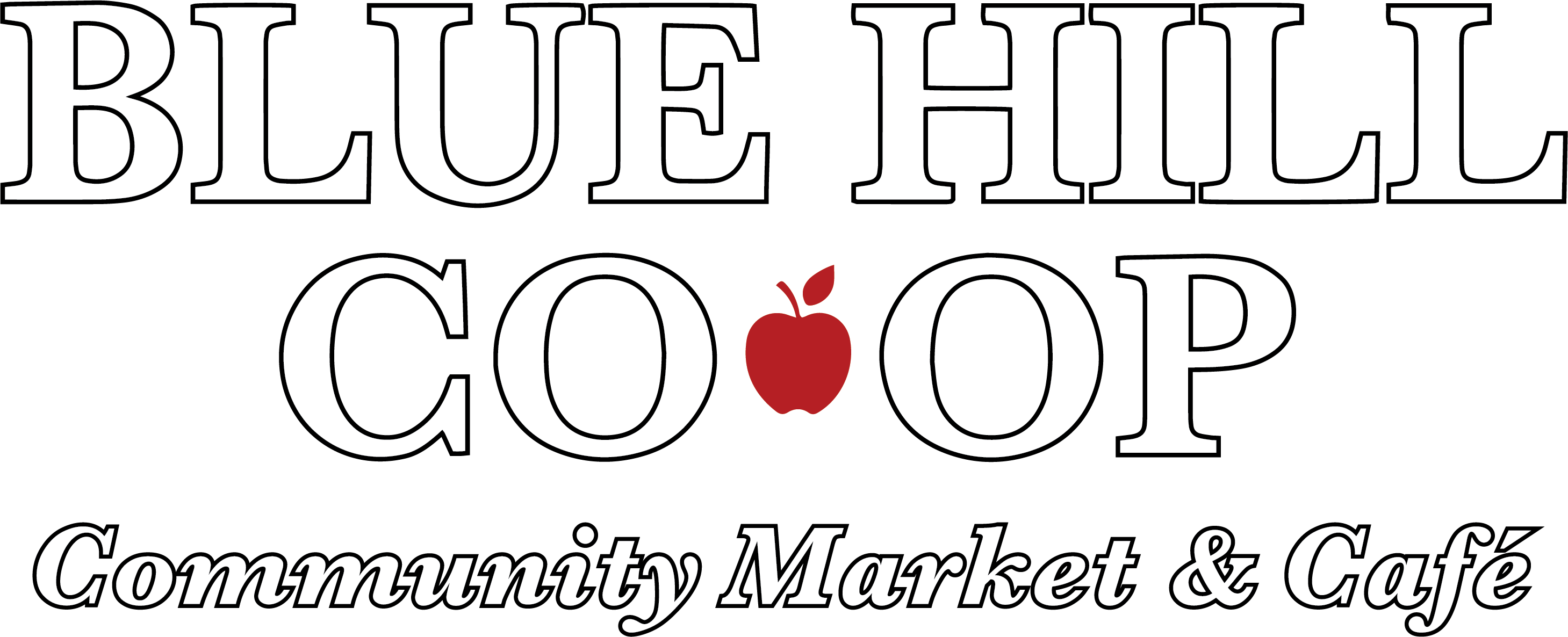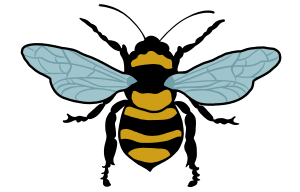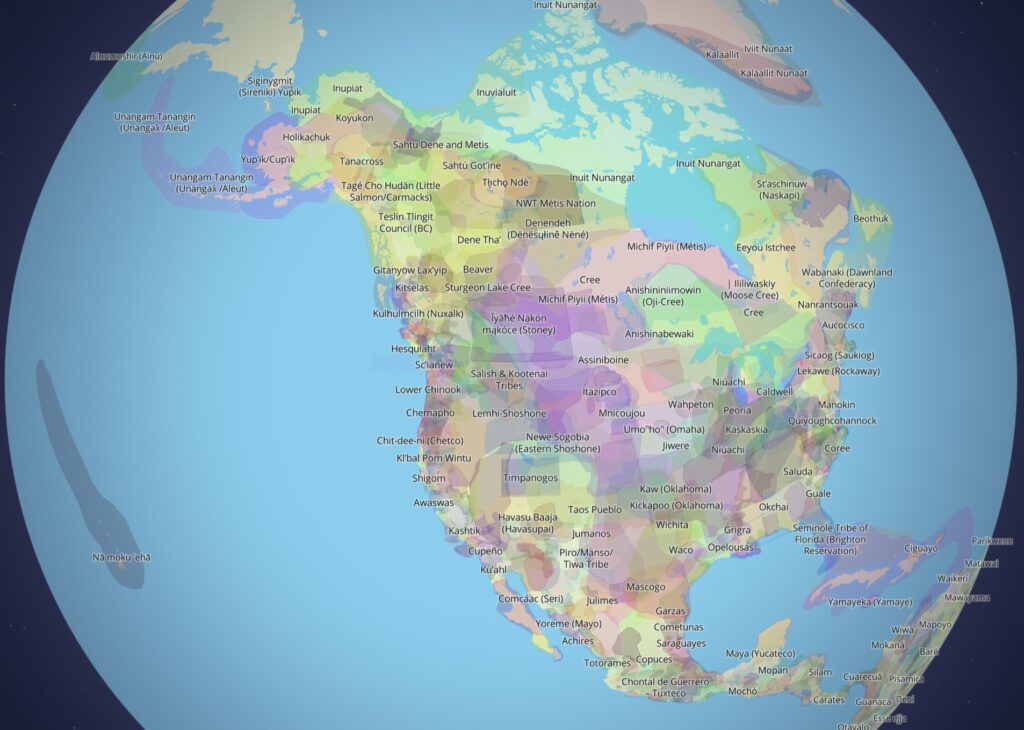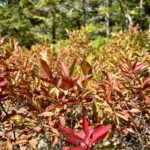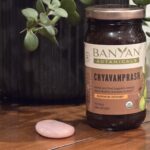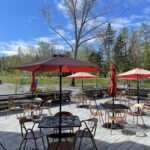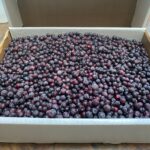Why are we talking about Indigenous Food Sovereignty so much this month at the Blue Hill Co-op?
Firstly, because the story of the first Thanksgiving perpetuates an inaccurate and harmful version of history. This month, we’re hoping that by offering the community a plethora of resources and information, we can do our small part to help correct many of these misconceptions.
Secondly, Type 2 diabetes is at an epidemic level among Native Americans, who have the highest prevalence of diabetes of any group. Native American and Alaska Native adults are almost 3 times more likely to have type 2 diabetes compared to White adults. Native children and young adults are being diagnosed at an alarming level never seen before– according to the Centers for Disease Control, youth aged 10-19 are nine times more likely to be diagnosed with Type 2 diabetes compared to non-Hispanic whites. While a multitude of factors contribute to the high incidence of Type 2 diabetes in Native American communities, the alarming statistics can be traced back to the change from pre-reservation traditional diets and lifestyles to more westernized, sedentary lifestyles and foods. The biggest contributors to this loss in food access was forced removal from native lands onto barren reservations, forced assimilation into Native American Boarding Schools, and the government-provided commodity food distributed to those on reservations. Commodity foods commonly included white flour, lard, sugar, dairy products, and canned meats– a major contrast from the unprocessed, whole, traditional foods that Indigenous peoples were used to. Countless displaced communities went from active hunting and gathering to post-reservation diets which included a troubling amount of refined white flour and fat, which has led to today’s diabetes health crisis.
It is because of this epidemic that people within the Indigenous communities are working towards an indigenous foods movement as a means of cultural renewal, environmental sustainability, and as a way to reclaim Food Sovereignty. Food access is an issue at multiple levels: access to seasonally available wild foods, financial access to fresh, whole foods, and access to the cultural knowledge to prepare and preserve traditional foods.
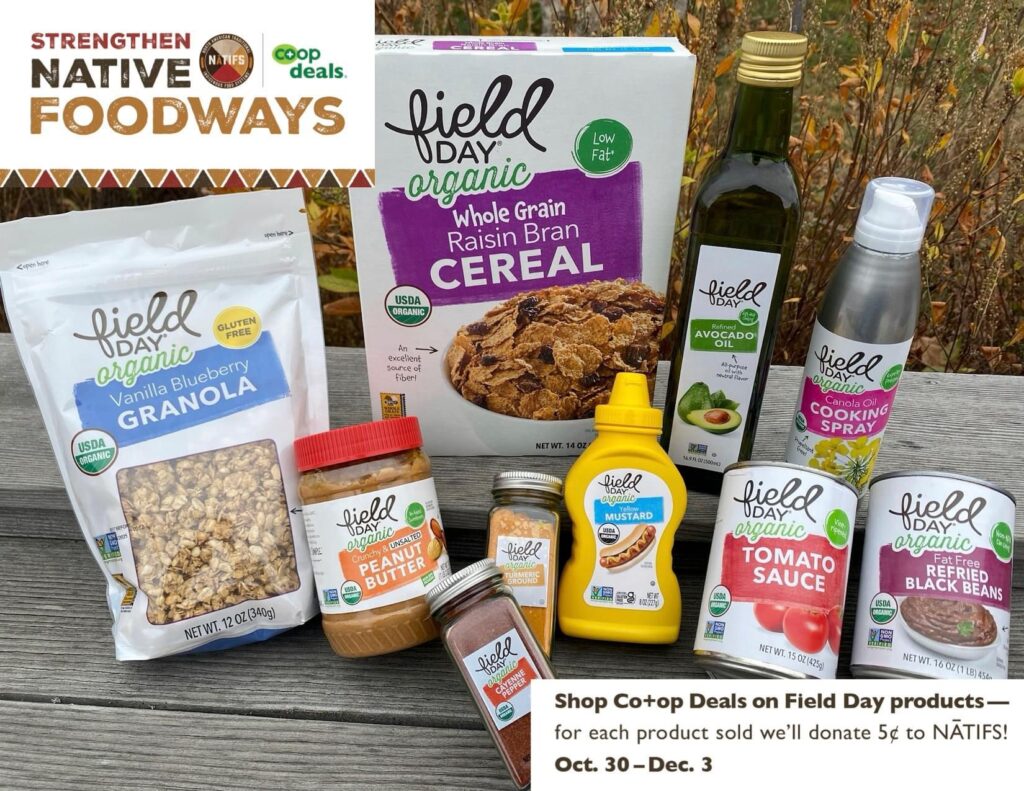
Our participation in Field Day’s nationwide Support Native Foodways campaign this holiday season is supporting the Indigenous Food Sovereignty movement by donating proceeds to NĀTIFS. NĀTIFS is a nonprofit organization founded by Lakota Chef Sean Sherman (known as the Sioux Chef), dedicated to revitalizing Indigenous food systems and promoting cultural preservation within Native American communities. Through initiatives like the Indigenous Food Lab, NĀTIFS offers training programs, educational workshops and support for Indigenous entrepreneurs to empower individuals and foster economic development. By addressing economic disparities, food insecurity and the loss of Indigenous food knowledge, NĀTIFS aims to restore health, wealth and cultural identity to Indigenous populations. The organization’s commitment to promoting Indigenous foodways education, facilitating food access and revitalizing ancestral knowledge underscores its mission to create positive social impact and support underserved communities. To learn more about NĀTIFS, visit NATIFS.org. If you want to get involved, follow NĀTIFS on social media, sign up for the NĀTIFS newsletter or make your own donation. You can also lend a hand by sharing their mission and vision on social media with your friends and family.
Below is a link to a TedxTalk from Sean Sherman, who discusses where and when traditional food knowledge was lost, why it’s important to revive it, and how reclaiming Indigenous Food Sovereignty can benefit not only Indigenous communities, but all of us. Chef Sean Sherman has dedicated his career to supporting and promoting Indigenous food systems and Native food sovereignty. He draws on the knowledge and culinary techniques of his ancestors to develop innovative, nutritious, and flavorful dishes that incorporate wild game, fish, foraged plants, and heirloom grains using only ingredients that are native to North America. Sean has had a major impact on revitalizing and revolutionizing Native cuisine in the U.S. through his Minneapolis-based restaurant, Owamni, as well as the 501(c)(3) nonprofit organization he launched to address the economic and health crises affecting Native communities by re-establishing Native foodways— North American Traditional Indigenous Food Systems (NATIFS). Through his activism and advocacy, he is helping to reclaim and celebrate the rich culinary heritage of Indigenous communities around the world.
“Our ancestors understood how to live in balance with the natural world. Indigenous foods are the original foods of this continent. It’s important we recognize that and start celebrating those foods.”
A Taste of Indigenous Foods: Online Cooking Class with Mariah Gladstone November 25, 2024
What are indigenous foods, where do we get them, and how do we prepare them? Many native North American foods, both cultivated and harvested, were removed from our diets through intentional colonial efforts. Mariah Gladstone is leading the way in a food movement that is revitalizing and incorporating these important foods into the contemporary diet. During her virtual presentation and cooking class, you will cook along with her as she prepares one of her original recipes and discusses the history of Indigenous foodways and the First Thanksgiving.
NĀTIFS Indigenous Food Lab Market
In conjunction with the Indigenous Food Lab (which is NATIFS’s professional kitchen and educational center), NATIFS also has an online market. There are over 50 Native-American owned businesses who contribute to the market, selling a wide variety of products: Non-GMO heritage and heirloom corn meal and dried corn, pinole, organic beans, Pemmican style meat snacks, Buffalo jerky, hand harvested wild rice (gathered and processed by locally and packaged at the IFL), chuza fruit snacks, chocolate covered crickets, syrup, honey, hot sauces, jams, bison tallow, seasonings with handpicked boreal herbs, cactus stick snacks, body care products, housewares (such as tortilla presses and mugs), IFL Market clothing and merchandise, Seed Savers Exchange seeds, as well as a number of educational books and cookbooks.
Katahdin Kitchen - Penobscot Nation
A three person operation, Katahdin Kitchen is about food sovereignty, culture and creating a community space. Their menu consists of unique traditional and seasonal dishes that fuse indigenous ingredients with dishes from other cultures.
Katahdin Kitchen is open 2 p.m. to 7 p.m. on Thursdays, at 1492 State Street, Veazie.
Maine Public “New pop-up restaurant in Bangor area highlights indigenous cuisine”
Passamaquoddy Maple - Passamaquoddy Tribe
Harvesting maple syrup is a time-honored tradition for the Passamaquoddy people and tribes across the Northeast and Great Lakes regions. Passamaquoddy Maple is 100% tribally owned with a mission to provide high-end, small batch products that sustain tribal land and create jobs for tribal members. Passamaquoddy Maple syrup is certified organic and sustainably harvested from the tribe’s land in Maine.
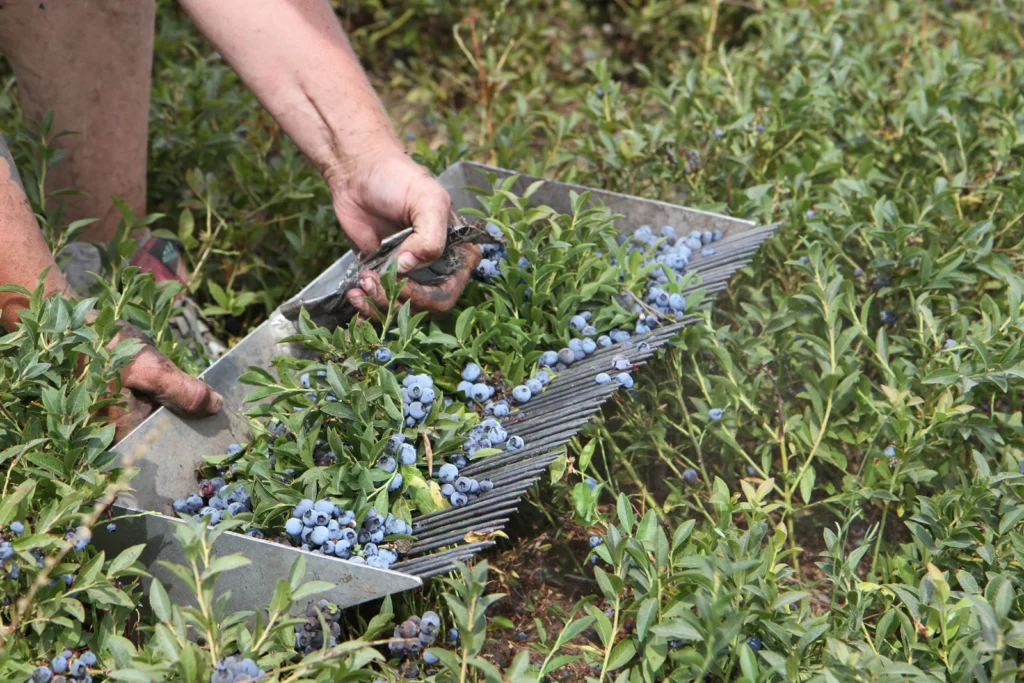
Passamaquoddy Wild Blueberry Company - Passamaquoddy Tribe
Headquartered in Columbia Falls, Maine, the Passamaquoddy Wild Blueberry Company (PWBC) is owned, managed, and staffed by Passamaquoddy Tribe members. The Passamaquoddy Wild Blueberry Company provides full-time, year-round, and seasonal jobs for Passamaquoddy Tribe members. Through the collective efforts of these individuals and with the support of the Tribe, PWBC has independently produced millions of pounds of low-bush, wild blueberries year after year since 1981. PWBC is on a journey to share its unique history and tradition while expanding into producing premium, small-batch products that will delight palates worldwide.
*As of this month, you can find PWBC Freeze-Dried Blueberries in the produce department at the Blue Hill Co-op!*
Si’st Sipu ~ Three Rivers - Mi’kmaq Nation
Native American owned and located in traditional Mi’kima’ki territory along the shores of the Restigouche River in northern New Brunswick. Si’st Sipu (Siist Si•bu) means three rivers in Mi’kmaq and represents the “three rivers” of knowledge and plant medicine teachings that the owner has received from Elders in North, Central and South America. Deer hide gloves and mittens, as well as salves, skin & hair care products, tinctures and beaded jewelry.
Nk’Mip (Inkameep) Cellars - Osoyoos Band
The first Indigenous-owned winery in North America, NK’Mip is owned and operated by The Osoyoos Indian Band. The centuries-old home of the Osoyoos Indian Reserve is 32,000 acres of Sonoran Desert landscape. Surrounded by time-weathered mountains and dotted by magnificent mirrored lakes, it reaches from Vernon to Tonasket and from Rock Creek to Princeton. Here in the hottest and driest part of Canada, over 500 Osoyoos Band members secure and share a legacy of hard work and a passionate respect for nature. The word Nk’Mip translates to “Bottomland” in English, being located at the southern end of the Osoyoos reservation. Today, the Nk’Mip Cellars are one of many business, health, social, educational and municipal initiatives that have earned the Band financial independence and high employment.
Ramona Farms - Akimel O'Odham (Gila River Pima)
Ramona’s American Indian Foods, LLC, is a Native American (Akimel O’Odham) business owned by Ramona Button and her husband, Terry, in Sacaton, Arizona. They have been farming on the Gila River reservation for over forty years and produce traditional food products such as the tepary bean (which has been handed down for countless generations amongst the Akimel O’Odham People and the Tohono O’Odham People). The “Ramona Farms” line of food products includes Wheat Berries, Wheat Pinoles, Wheat Flour, Corn Pinole, Cornmeal, Corn Flour, Corn Grits, Cornmeal, Corn Polenta, Garbanzo Beans as well as Black, Brown and White Tepary Beans. The products are grown, harvested, processed, packaged and shipped to you from their farm in Sacaton, Arizona.
Spirit Lake Native Farms - Anishinabe/Ojibwe Tribes
Based in Sawyer, Minnesota, Spirit Lake Native Farms produces high quality, custom-finished wild rice. The company uses the tribe’s traditional technique of hand-roasting the rice over an open fire. Harvested from lakes from the homelands of the Anishinabe/Ojibwe, their wild rice is the perfect addition to culinary adventures and for sharing a conversation about indigenous foods.
Native-Land Map
Check out this map from the Canada-based nonprofit Native Lands Digital to familiarize yourself with the environmental and cultural history of the United States! Every square inch of this continent carries wisdom and stories of its first citizens. Native Land Digital honors the sovereignty of all Indigenous nations, their lands, and their waters and recognizes that these boundaries and territories are representations of the sacred. NLD respects the rights of Indigenous data sovereignty and is committed to an ongoing process of collaboration, growth, and learning. They work to update and replace information that is a continuation of trauma caused by theft, injustice, misinformation, and ignorance.
The map is a living document, informed by the contributions of Indigenous communities, Indigenous knowledge holders and their stories. It does not claim to represent official or legal boundaries. Viewers are encouraged to connect directly with the Indigenous nations to learn more about their territories and histories.
The Atlas Obscura (“Gastro Obscura” ) “The Indigenous Origins of the Maine Lobster Bake ”Article
Article from August 2022 delving into “The Indigenous Origins of the Maine Lobster Bake.” In the article, Indigenous writer, artist, and activist Ann Pollard Ranco holds a Wabanaki-led lobster bake to explore the provenance of an iconic Maine feast.
The Indigenous Origins of the Maine Lobster Bake
Article by Sarah Scamperle, Marketing Assistant
Sources:
Indigenous Food Sovereignty Initiative
Type 2 Diabetes in Native American Communities
CDC Prevalence of Diabetes in Native American Communities
